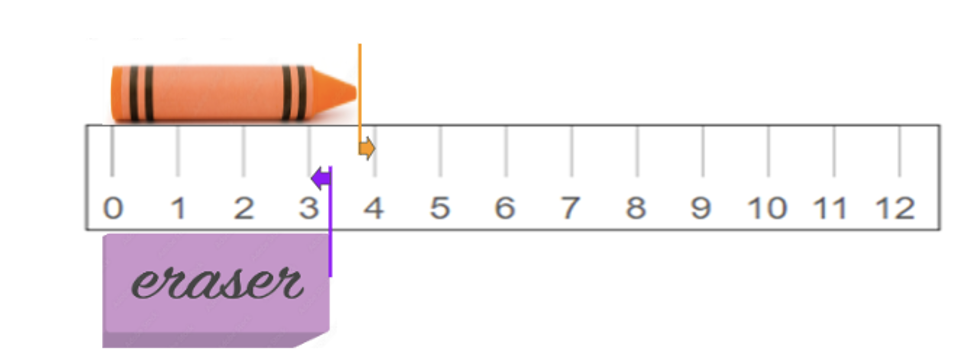General Information
Benchmark Instructional Guide
Connecting Benchmarks/Horizontal Alignment
Terms from the K-12 Glossary
- NA
Vertical Alignment
Previous Benchmarks
Next Benchmarks
Purpose and Instructional Strategies
The purpose of this benchmark is to directly compare the length of two objects measured using the same unit and determine the difference.- Instruction includes selecting the appropriate tool to measure.
- Instruction includes helping a student choose a method they can use reliably to determine the difference.
- Instruction includes helping students record the appropriate measurement when the object falls between two whole number measurements.
Common Misconceptions or Errors
- Students may always choose to use a ruler to measure length, even when the object is longer than a ruler.
- Students may count all tick marks, not just the whole-unit marks, when reading a measurement tool and misread the nearest whole unit.
- Students may add instead of subtract to find the difference between the two lengths or try to subtract the longer length from the shorter length because they measured them in that order.
Strategies to Support Tiered Instruction
- Instruction includes helping students understand that when we measure longer objects, it is best to use a tape measure, yard stick or meter stick and use larger units, if possible.
- For example, ask students to use their inch or centimeter rulers to measure the length of the whiteboard or another long object in the room. Then show them how to use a tape measure (or meter or yard stick) to measure. Note that it is easier to measure with these tools.
- Next, have students note that they could find the number of inches or centimeters more accurately with the longer tool because they didn’t have to keep moving their tool.
- Then, have students notice the different units of measure on the measurement tool (meters with the centimeters and feet and yards with the inches).
- Model how to count by meters, feet and yards on the measurement tool and have students practice measuring objects in these units. Talk about the number of inches it takes to measure an object versus measuring the same object with feet.
- Instruction includes modeling a think aloud using a ruler as a number line to show how a measurement is about ____ units when the object falls between two whole number measurements.
- For example, show a ruler with just the whole number tick marks. Measure an object that is closer to 3 inches and measure an object that is closer to 4 inches.

The _eraser_ is about _3_ inches long. The _crayon_ is about _4_ inches long.
Instructional Tasks
Instructional Task 1 (MTR.4.1)
Provide students with an object of a given measurement in various units.- Part A. Find objects in the classroom or that are shorter or longer than the given object and find the difference using the common unit.
- Part B. Discuss which tool was more appropriate to use and what strategy was used to find the difference.
Instructional Items
Instructional Item 1
A pair of scissors measure 22 centimeters long, and a glue stick measures 14 centimeters long. Which statement below is true about the measurement of the objects?- a. The glue stick is 9 cm. longer than the scissors.
- b. The glue stick and scissors are 8 cm. long.
- c. The scissors are 8 cm. longer than the glue stick.
*The strategies, tasks and items included in the B1G-M are examples and should not be considered comprehensive
